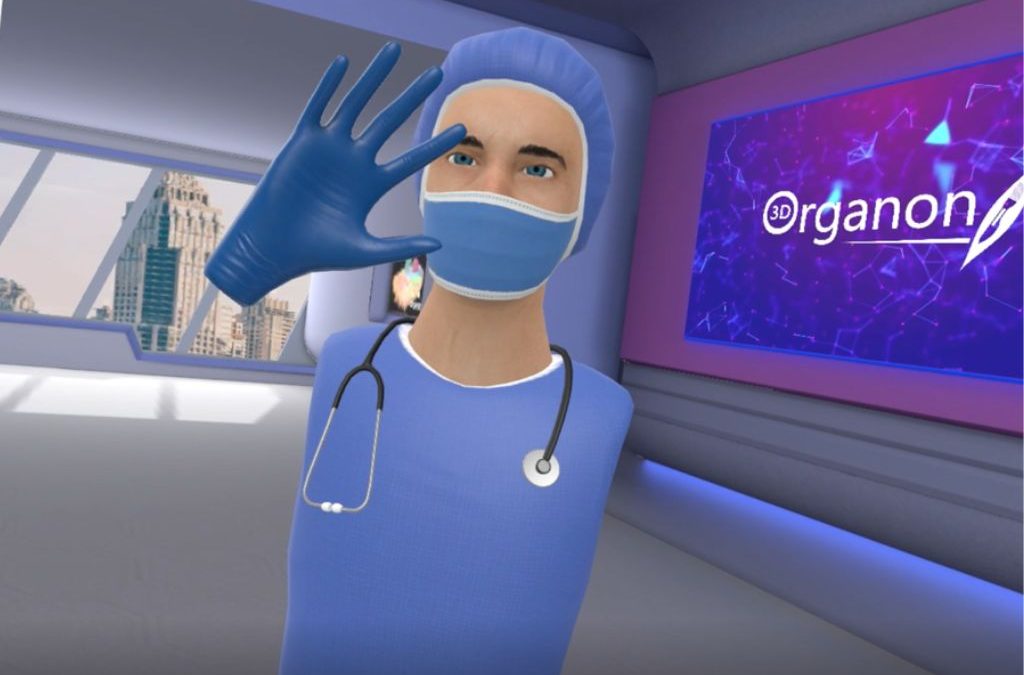The 3D Organon Medverse
We are delighted to present the 3D Organon Medverse. The Medverse is an updated Network module, that allows participants to join multi-user online training sessions hosted by educators and institutions. Moreover, through the Medverse, the participants can create their classes and invite other users to join.
3D Organon was the first medical education platform that introduced a VR Network function back in 2018. Now, out team is coming with more synchronized tools and features, in a new environment, with photorealistic avatars.
The enriched multi-user VR module provides shared anatomy learning experiences. The students now have the ability to interact in the same virtual space. More specifically, all users can communicate with their tutors and peers in real-time through voice chat and messages, as they magnify structures of interest, and observe and manipulate 3D models from various viewpoints. Our system supports various training scenarios in virtual reality, ranging from small learning groups to classroom-size education.
This module enables educators to host immersive real-time virtual rooms for students to suit in-campus or remote delivery of anatomy teaching. Students can access the whole knowledge base of 3D models, descriptions, cadaveric images, microscopic models, bone mapping, clinical correlations, and body actions on their headsets, using the 3D Organon tools, such as the Sectioning tool, Tumor Growth tool, and Pain Effect tool among others.
The updated Multi-user module
The updated 3D Organon multi-user module provides an amazing user experience in terms of the presence, perception, cognition, engagement, task performance, and preference while developing an environment based on additional sensory stimuli support and investigating the influence on the multi-user interactions. At the same time, it affects embodied interaction through virtual avatars.
The 3D Organon Avatars
The 3D Organon Medverse allows users to create their metaverse presence. Users can choose among the 3D Organon collection of photorealistic avatars and display a name of their choice. Movements are always transmitted in real-time so that actions such as body movement, shaking, or waving can be recognized by other participants.
Entering the Medverse
Imagine standing in your living room but feeling as though you are exploring the human body in a virtual medical lab alongside a friend who lives on the other side of the world. You are in the Medverse.
3D Organon’s innovative features are making informational medical academic content attractive and fun. In addition, the 3D Organon environment can help study various complex concepts or organs.
Interaction or peer-to-peer communication is paramount in the medical field. It is mandatory to develop social and professional interaction skills. With Medverse it is easy to crack this challenge, by allowing students to connect with others while performing academic tasks on the 3D Organon platform.
3D Organon Medverse is the ultimate fully immersive multi-user virtual experience, reaching a strong feeling of presence is a necessary step to an effective and natural VR experience, enabling more intuitive multi-user interactions in both co-located and remote settings by providing richer social cues in multimodal ways. Such interactions can transform conventional methods for learning and collaboration to another level improving the user experience and performance in given tasks.
Medical education is entering the period of greatest growth in its history. In this new educational landscape, the digital space has become integral to how we access information and communicate with one another. By entering the 3D Organon Medverse you are becoming a modern medical educator who must be able to appraise the advantages of the digital world. 3D Organon contributes to making medical education more learner-centric, horizontal, and accessible.
Start with 3D Organon today: www.3dorganon.com
Watch the Medverse video in 3D Organon' s YouTube Channel
For the latest news, follow 3D Organon on social media.

